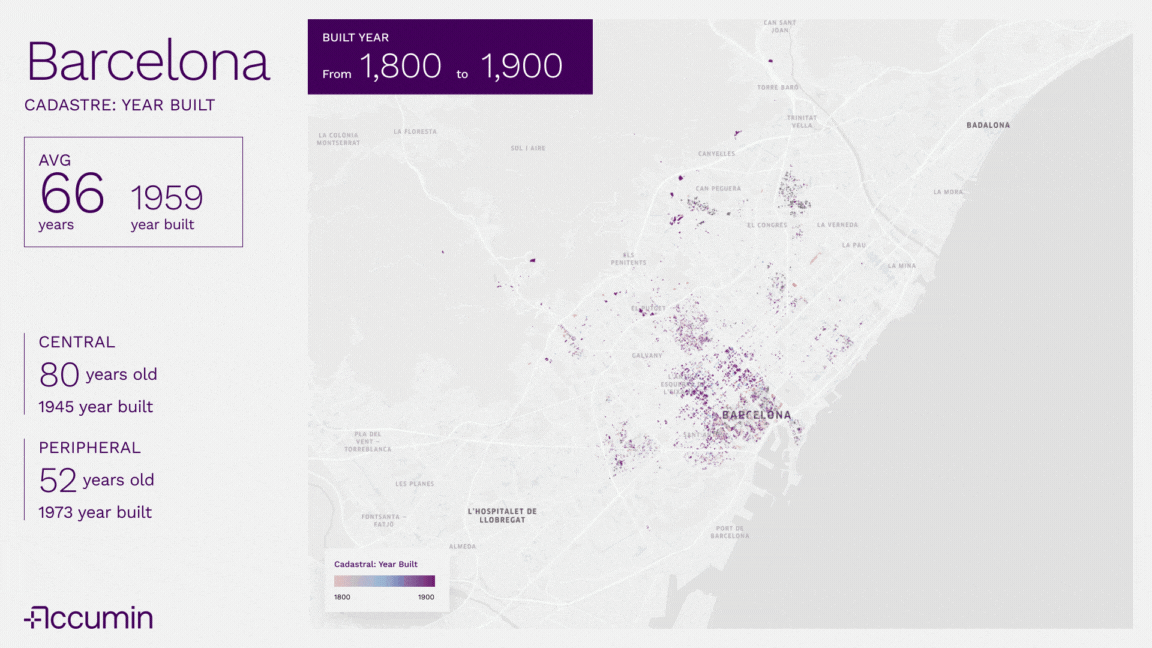
Urban Evolution of Madrid: Discover the City's Construction History with This Striking Animated Map
Jul 17, 2025

This animated map reveals how the city has grown over more than two centuries.

With an average building age of 66 years, Barcelona’s housing stock is a blend of architectural heritage and constant renewal. 45% of current homes were built before 1960, and over a third are located in central areas—where history is etched into every façade.
But this is not a city trapped in time. From Poblenou to 22@ and La Marina, Barcelona proves that cities can reshape themselves without losing their essence.
Before the Cerdà Plan (1859), life in Barcelona was tightly packed inside the old city walls. Narrow streets and multi-storey buildings defined Ciutat Vella. The implementation of the Plan de Reforma y Ensanche marked a revolution. The Eixample was born: open, rational, and full of light. Ildefons Cerdà didn’t just design a grid—he invented a discipline: urban planning. His octagonal layout, chamfered corners and strategic use of green space remain a global reference.
Between 1940 and 1980, districts like Horta-Guinardó, Sant Martí, Nou Barris and Les Corts expanded rapidly, giving rise to Barcelona’s modern residential belt.
Since the 2000s, urban regeneration has taken centre stage. From Diagonal Mar to Glòries or the reimagined coastline, the city is committed to sustainability, innovation and spatial redesign.

Historic core – Ciutat Vella, Raval, Gòtic, Eixample Antic With an average age of 80 years, these districts embody Barcelona’s architectural legacy—and the challenge of large-scale refurbishment.
Peripheral areas – Sant Andreu, Nou Barris, Sants-Montjuïc, Sant Martí Averaging 52 years, these neighbourhoods offer functional layouts and high potential for transformation.
Emerging zones – 22@, Diagonal Mar, Marina del Prat Vermell These are the districts of tomorrow: efficient, digital and sustainability-driven.
In Barcelona, knowing the year a building was constructed reveals the hidden logic of urban evolution. Each neighbourhood tells a unique story—defined by its origin, growth cycles and capacity to adapt. At Accumin Intelligence, we analyse these patterns with precision to help investors, planners and institutions make smarter decisions—grounded in data and focused on the future.